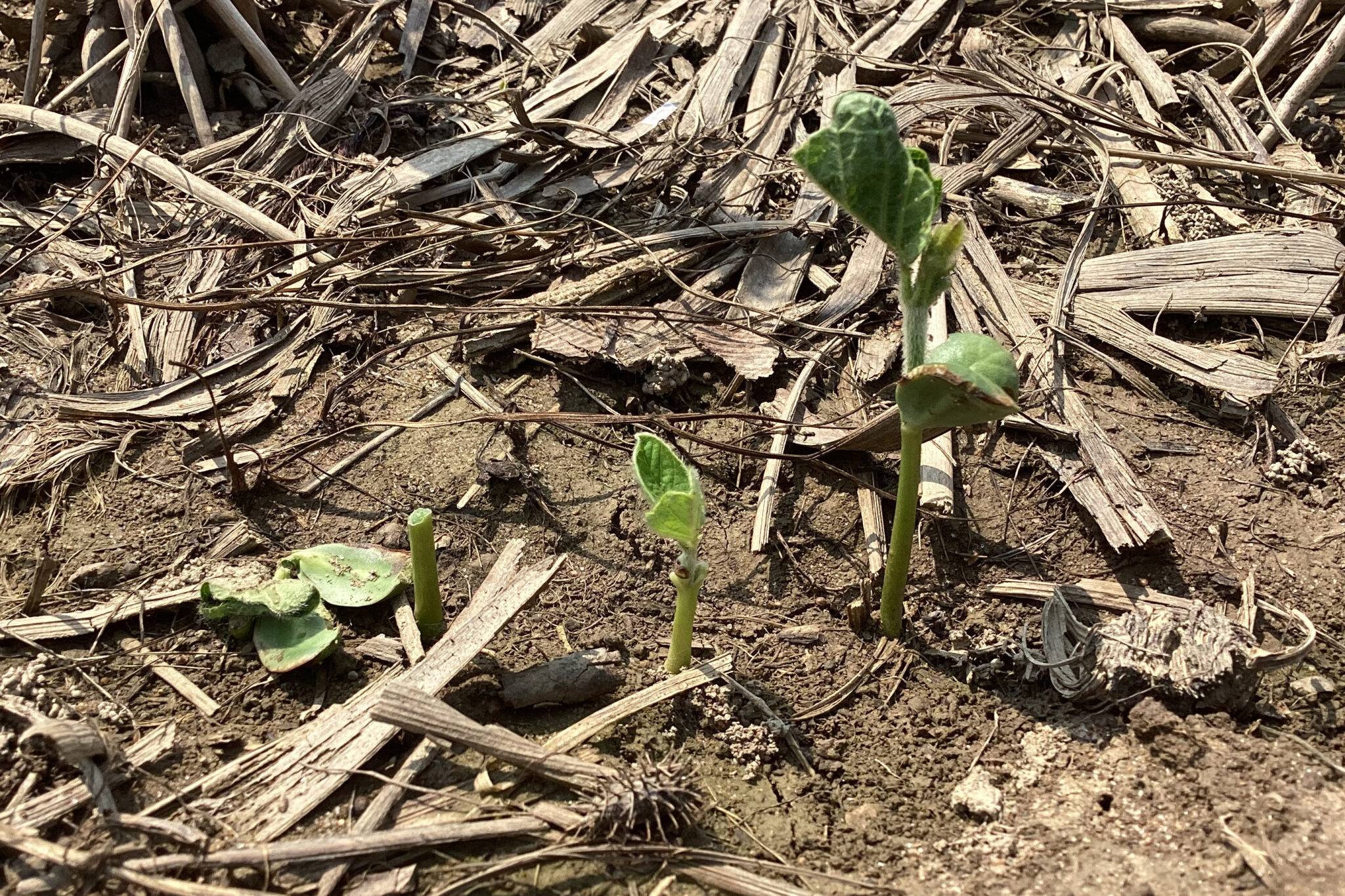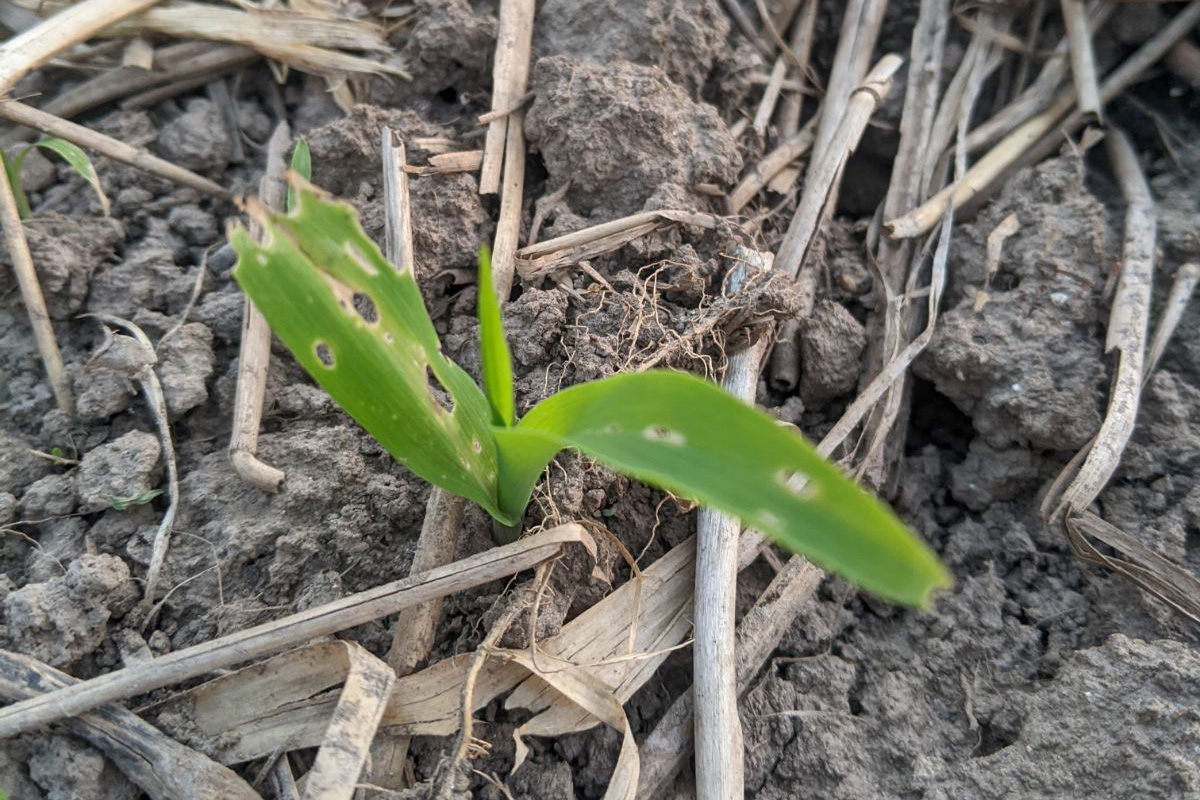No surprise, as reported in last week’s Pest&Crop, the “landing spots” for the many black cutworm moths into the state are now being realized. Another encouragement to scout high-risk corn and soybean fields as they emerge.
Black cutworm larvae, some near pupation, were reported cutting soybean seedlings in Southwest Indiana. The river bottom fields, lush with weeds earlier this spring, had lost 4 to 8,000 plants/acre from the damage. Because of soybeans ability to compensate for lost plants, and the size of the cutworm larvae, no treatment will be necessary in these fields. Fortunately, the damage was scattered throughout, rather than concentrated in areas of the fields. If replanting, or filling-in, is being considered, the following publication may be of help, click HERE.
In West Central Indiana, black cutworm damage was being reported in one-leaf sweet corn planted into cover crop residues. Most plants had some leaf feeding, and cutting was just beginning. The producer was going to apply a rescue treatment to protect this high-value crop. Pest management at work!
Happy scouting!




